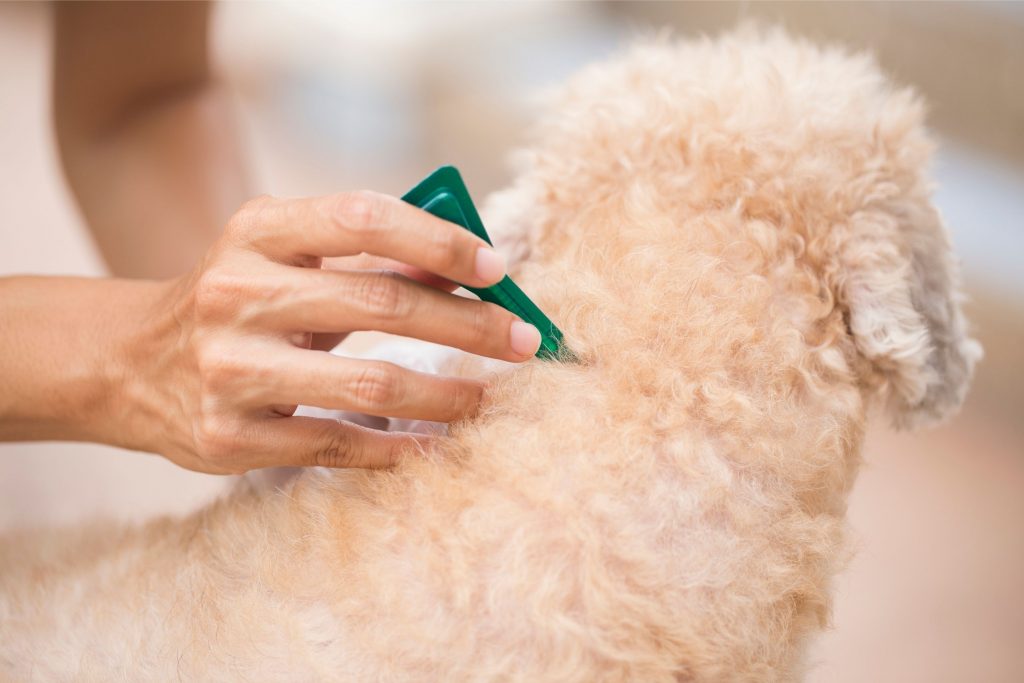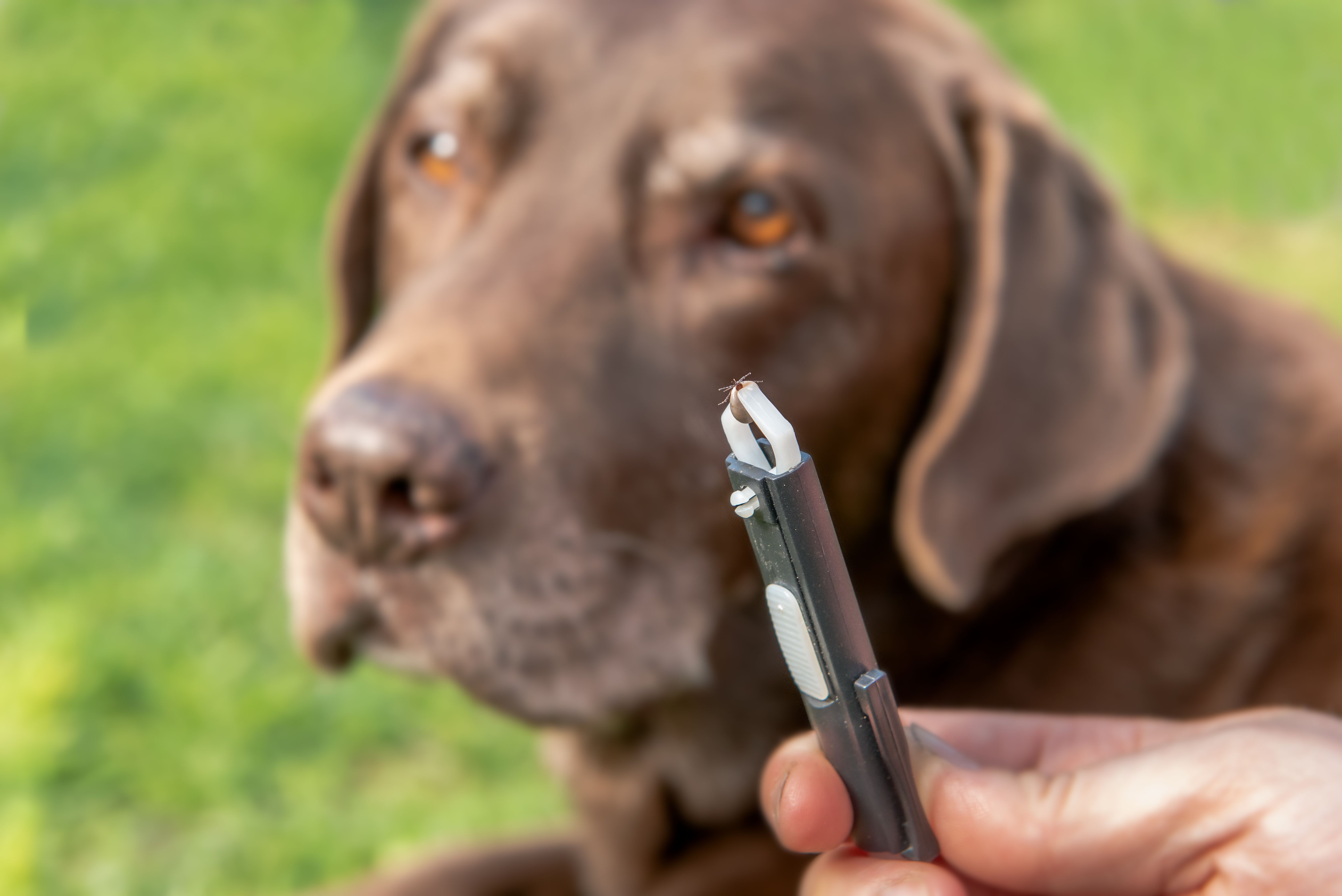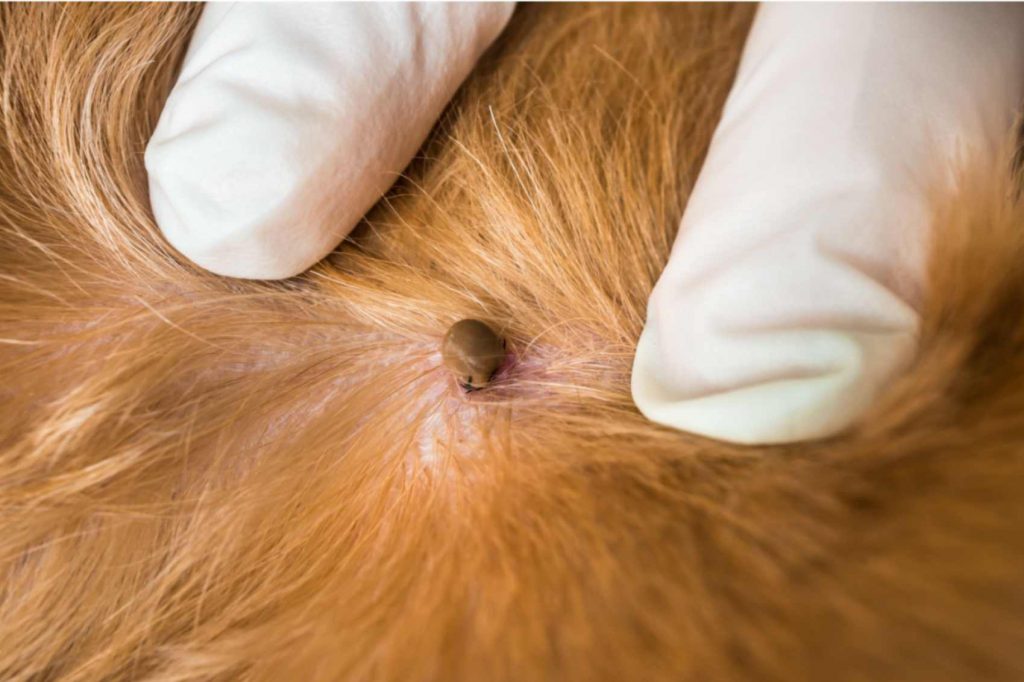Dogs are awesome. Ticks, however, are not. This is why dog owners do everything they can to ensure ticks stay as far away from their dogs as possible. However, keeping these bloodsuckers away is not always possible despite our best efforts. For these cases, knowing how to remove a tick from a dog safely and effectively is helpful.
5 Steps to Safely Remove a Tick from Your Dog
If you spot one of these hitchhiking pests, don’t panic. Instead, follow these five steps to carefully remove the tick as soon as possible:
- Gather the supplies you will need before starting. This will allow you to move through the process quickly and easily, avoiding unnecessary stress for your dog.
- Part your dog’s fur to find the tick at the surface of the skin. If you are using tweezers, carefully grasp the tick as close as possible to the skin’s surface. If you are using a tick removal tool, position it per the instructions.
- Pull directly away from the skin with steady, even pressure. Avoid twisting the tick or pulling at an angle, as this could cause the mouthparts to break off and be left behind. If this happens, you can try removing them with the tweezers or just leave them and allow your dog’s body to take care of them.
- Carefully clean the area from which you removed the tick and your hands with soap and water.
- Dispose of the tick appropriately by placing it in rubbing alcohol, flushing it down the toilet, or placing it in a sealed bag/container before throwing it out.
Of course, removing one tick doesn’t mean that your dog is now tick-free. Always assume there is a risk of other hitchhikers when you have found the first one. The only way to know your dog is tick-free is to carry out a thorough tick check.
Keep an eye on your dog in the days and weeks after removing a tick. Look for signs of infection, such as a rash or fever or any symptoms of tick-borne diseases. If you suspect trouble, contact your veterinarian, letting them know about the tick, including when they were bit and where they likely picked up the unwanted pest.
Things to Avoid When Removing Ticks

Many social media posts and videos share “easy hacks” to remove a tick, such as smothering the tick with petroleum jelly or nail polish, burning the tick with a lit match, or using essential oils to repel the tick. Not only are these techniques less effective than simply removing the tick with a pair of tweezers, but they may also set your dog up for more significant long-term problems.
The hacks all rely on the idea that the tick will eventually withdraw from the skin. However, even if the tick does eventually release (which it doesn’t always), it will likely happen far later than if you had removed the tick yourself, increasing the chance of tick-borne disease.
Additionally, these techniques can irritate the tick, causing it to vomit or salivate, raising the risk of disease transmission.
Possible Symptoms of Tick-Borne Diseases

While no one wants to be bitten by any bug, ticks can carry some serious diseases. The disease risk is much lower if you remove the tick in the first 24 to 48 hours. However, there are no guarantees. Learning the warning signs will help you identify the problem and get veterinary care quickly.
The most common disease associated with ticks and tick bites is Lyme disease, a bacterial infection that can impact the joints, heart, and nervous system. Other tick-borne diseases include Rocky Mountain Spotted Fever, Babesiosis, Anaplasmosis, Ehrlichiosis, Bartonellosis, and Heptazoonosis.
Symptoms of tick-borne diseases you should be on the lookout for include:
- Loss of appetite
- Vomiting
- Diarrhea
- Bloody or dark-colored urine
- Discharge from the eyes or nose
- Pale gums
- Fever
- Yellowing skin or eyes
- Unexplained bruising
- Swelling in the joints, legs, or abdomen
- Limping or lameness
- Wobbliness or unsteady gait
- Lethargy or loss of energy
If you notice any of these signs (or any combination), contact your veterinarian or bring your dog to the nearest emergency clinic. The sooner treatment starts, the better their chances of a full recovery.
How to Avoid Ticks on Your Dog in the First Place

Of course, the best option is to avoid dealing with ticks entirely. Whether you’re planning to visit a high-risk tick zone or live somewhere where they are common, you can take steps to significantly reduce the risk of trouble.
The most effective way to avoid a tick bite is to keep your dog on a tick prevention treatment from your veterinarian. There are two main types: oral (preventatives they ingest like a chew) and topical (preventatives absorbed through their skin). If a tick does climb onto your dog and bite, it dies quickly before diseases can be transmitted.
You can purchase an all-natural tick prevention spray from your local pet store if you prefer a more natural approach. Apple cider vinegar also has tick-repellent properties. It can be added to your dog’s water or mixed with water to create a repellent spray.
Products like Tickless are small devices that emit ultrasonic waves that your dog can’t detect. However, these waves are said to repel fleas and ticks.
Finally, ensure that you always thoroughly tick-check your dog after any time outdoors. For short-coated dogs, you can run a lint roller over your dog’s coat to pick up any pests still walking around. If your dog has a longer coat, you must separate the fur to see if a tick is embedded in the skin.
The most common places to find ticks include:
- In and around the ears
- Around the eyelids
- Elbows
- Armpits
- Around the lower stomach or groin area
- Between the toes
- Base of the tail
By following these preventative steps and understanding the risks associated with tick bites, you can keep your dog safe during outdoor adventures. If you find a tick on your dog, remain calm and remove it carefully to minimize the risk of tick-borne diseases. Always talk to your veterinarian if you have concerns or if your dog exhibits symptoms of tick-borne diseases. Remember, a little education and prevention can go a long way!








Leave A Comment